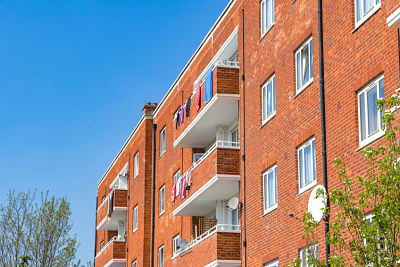
Looking for a way to increase your rental property’s profitability? Instead of raising rent, your priority should be reducing operational costs.
Why? Because cutting operational costs is a more sustainable strategy, and it doesn’t run the risk of upsetting your tenants!
By finding smart ways to lower your expenses, you can increase your rental business’s profitability while still maintaining a competitive rental price. This strategy not only puts more money in your pocket, but it also provides more long-term stability, helps mitigate against financial risks, and gives you greater financial flexibility.
In this article, we’ll explore common operational costs landlords face and effective strategies for reducing these expenses.
What operational costs do landlords have?
Your operational costs are the day-to-day expenses required to keep your rental business running smoothly.
Those costs vary depending on your business strategy and portfolio size. Landlords who have the time to manage their rental properties themselves may have lower operational costs than those who use the services of a letting agent or property management company. Equally, the operational costs for short-term lets and HMOs (houses in multiple occupation) are likely to be significantly higher than your traditional buy-to-let due to the increased turnover and management demands.
Regardless of your approach, all landlords will incur some or all the operational costs listed below:
- Mortgage payments
- Property maintenance and repairs
- Advertising and marketing
- Property management fees
- Letting fees
- Insurance
- Void periods
- Property taxes
- Council tax and utilities
- Legal fees
- Accounting fees
By understanding and actively managing these costs, landlords can identify opportunities for savings and improve their overall profitability.
Why is reducing operational costs so important?
Lowering operational costs is key to maximising the profitability of your rental property or portfolio, which means more money in your pocket.
Lowering expenses also helps to improve cash flow and reduce financial pressure, making budgeting and financial planning much easier. When your finances are healthy, it also gives you greater flexibility to take advantage of new opportunities – whether that’s renovating or extending your property or expanding your portfolio.
Landlords with lower costs and a healthy cash flow are also less vulnerable to external risks like economic downturns or unexpected changes in the property market.
Low operational costs are good news for your tenants, too, as they allow you to offer more competitive rental prices. Keeping rental prices competitive can help you retain your existing tenants and attract new ones quickly, reducing void periods and ensuring a steady rental income.
12 tips and strategies for reducing landlord operational costs
The day-to-day expenses of managing a rental property soon add up, and the most profitable rental property businesses are those where operational costs are carefully managed. Here at Landlord Vision, we’ve put together a list of 12 tips and strategies that landlords can adopt to help them minimise these costs and improve their business’s profitability.
1. Self-manage where possible
Ok, so this one is tricky for some landlords. Whether or not you can self-manage your rental properties really depends on how many you have and your personal circumstances. If you have a large property portfolio, then this may not be a viable option. Equally, if you work full-time in a demanding job, have other responsibilities, or are managing a long-distance property, then self-managing may not be a practical option. However, if it is possible for you to self-manage rather than using the services of a property management company or letting agent, then this could save you a significant amount of money.
2. Perform simple repairs and maintenance yourself
Again, this strategy is like the one above in that it may not be a viable option for everyone, depending on their circumstances. However, if you can brush up on your DIY skills, you may be able to save yourself some money by carrying out basic property maintenance and repair jobs yourself. So, next time your buy-to-let’s windows need cleaning, bath needs sealing, or garden needs tending, think twice before calling in your local handyman or contractor.
3. Keep up with property maintenance
While things can go wrong with even the most well-maintained properties, you will find you have fewer problems if you look after your buy-to-let. Performing routine maintenance tasks and regular property inspections can help you pick up small problems before they turn into much bigger and more expensive ones! Caring for your rental property will also enhance your reputation and boost tenant satisfaction.
4. Develop a tenant retention strategy
Void periods, along with the associated costs of advertising, marketing, and tenant onboarding, are one of the most costly and time-consuming aspects of property management. By creating an effective tenant retention strategy, you can significantly reduce these expenses by keeping reliable tenants in your property for longer. A focus on tenant satisfaction, property maintenance, and clear communication will help minimise vacancies and build long-term, positive relationships that encourage tenants to renew their leases, saving you both time and money.
5. Compare insurance policies
Most landlords pay around £200 for basic, no-frills landlord insurance, although many choose to add more optional extras to their policy. Rather than signing up with an insurance policy and then forgetting about it, regularly reviewing your policy and comparing deals with other providers can help you to make significant savings. If you find a better deal elsewhere, consider switching providers or asking your current provider if they can match the deal. Some providers offer discounts if you bundle up different types of insurance, e.g., landlord insurance and property insurance, with the same company.
6. Be tax efficient
Tax on rental income can swallow up a significant portion of your profits if you don’t take active measures to reduce your tax liability. Popular strategies for reducing tax liability on rental income include offsetting allowable expenses, letting property through a limited company, transferring property ownership to a spouse in a lower tax band, and establishing a partnership with your spouse to allow profit sharing.
7. Regularly review your mortgage
For most landlords, mortgage payments are their biggest expense, so regularly reviewing your mortgage and finding ways to reduce the cost is one of the most effective ways of boosting your profitability. If interest rates have dropped since you took out your mortgage, then refinancing may help you to reduce your monthly payments. Shop around for better mortgage deals or negotiate with your current lender. When interest rates are low, it can pay to lock in at a lower rate to protect you against future rate hikes.
8. Overpay on your mortgage where possible
Whenever possible, overpay on your mortgage to help reduce the total amount of interest you pay over the life of the loan.
9. Sell underperforming properties
If you manage a portfolio of rental properties, make sure that you closely monitor each property’s performance. If a property is consistently incurring high operational costs and a low rental yield, consider selling it and reinvesting the funds into a high-yielding property to improve your portfolio’s overall profitability.
10. Implement effective rent collection strategies
Non-payment of rent is a common challenge faced by landlords that can strain cash flow and increase operational costs. To minimise rent arrears and non-payment, landlords should encourage tenants to set up automated rent payments to reduce the likelihood of missed payments. Offering incentives for paying on time, such as a small discount on the last payment, can also help to create good payment habits. A late payment fee clause in the tenancy agreement can further encourage timely payments.
11. Leverage data and analytics
Leveraging specialist landlord software like Landlord Vision can provide landlords with advanced data and analytics about their rental business. This technology can be used to accurately track and monitor key metrics like operational costs, tenant behaviour, and market trends. Landlords can then use this data to identify cost-saving opportunities, streamline processes, and address areas for improvement. Ultimately, data-driven decisions can help to optimise the efficiency and profitability of the rental business.
12. Long-term financial planning
No matter the size of your property portfolio, it’s important to keep a detailed budget for each and every property. Carefully monitoring expenses like repairs, maintenance, taxes, and management fees enables landlords to stay in control of their finances. This approach can help in developing a strategic, long-term financial plan that minimises operational costs and maximises profitability.
Reducing operational costs for long-term success
While reducing operational costs can increase your profits in the short term, it’s ultimately a long-term strategy that will help you build a financially stable and sustainable rental business.
No matter what type of business you run, a healthy cash flow and increased profitability create a more flexible and resilient business. By optimising costs, you free up resources to reinvest in property improvements, expand your portfolio, and seize new opportunities as they arise.



